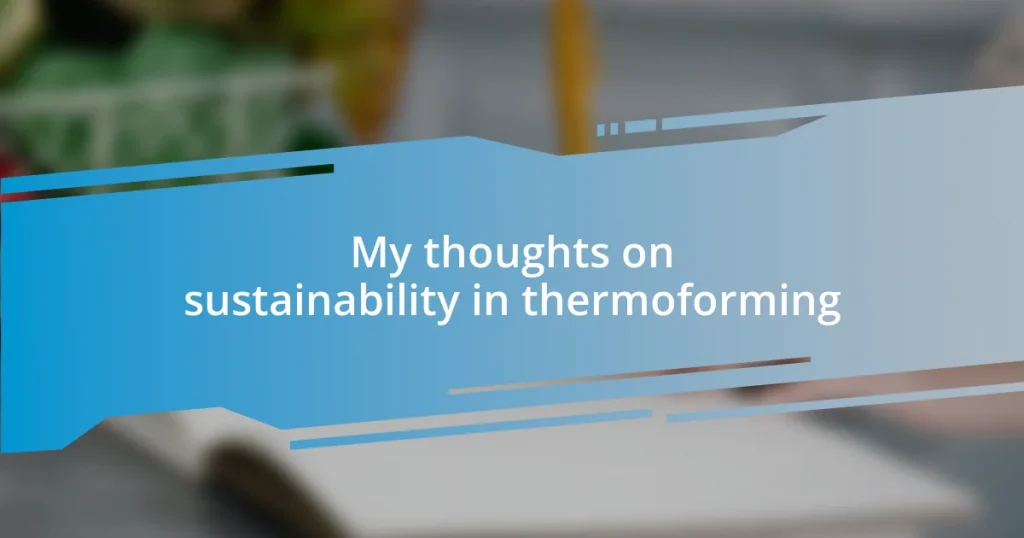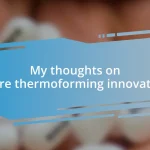Key takeaways:
- Thermoforming processes can be innovatively optimized for sustainability through energy efficiency, material choice, and waste reduction strategies.
- Utilizing sustainable materials, such as biodegradable plastics and recycled content, not only minimizes environmental impact but also resonates with eco-conscious consumers.
- Future trends in thermoforming emphasize renewable energy use, circular economy practices, and transparency in sustainability efforts to enhance trust and efficiency in manufacturing.
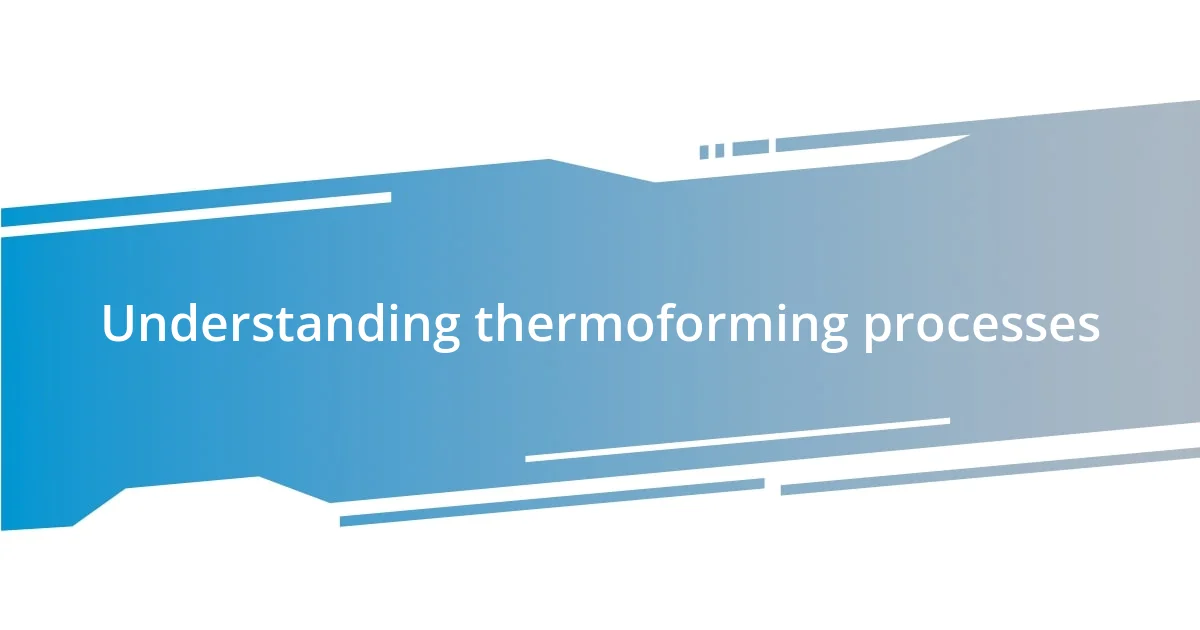
Understanding thermoforming processes
Thermoforming is quite fascinating, as it involves heating plastic sheets until they become pliable, then forming them into desired shapes using molds. I remember the first time I witnessed this process; the transformation from a flat sheet to a beautifully contoured product was nothing short of magic. It made me appreciate how heat could bring materials to life in such a precise manner.
There are various types of thermoforming, including vacuum forming and pressure forming, each serving different applications and industries. Have you ever thought about how crucial the choice of process can be? I often reflect on how these decisions affect everything from product durability to production efficiency.
In my experience, understanding the nuances of thermoforming can empower manufacturers to innovate sustainably. For instance, the ability to recycle scrap materials from the thermoforming process not only minimizes waste but also saves costs. Isn’t it incredible how a deeper understanding of our manufacturing techniques can lead us toward a more sustainable future?
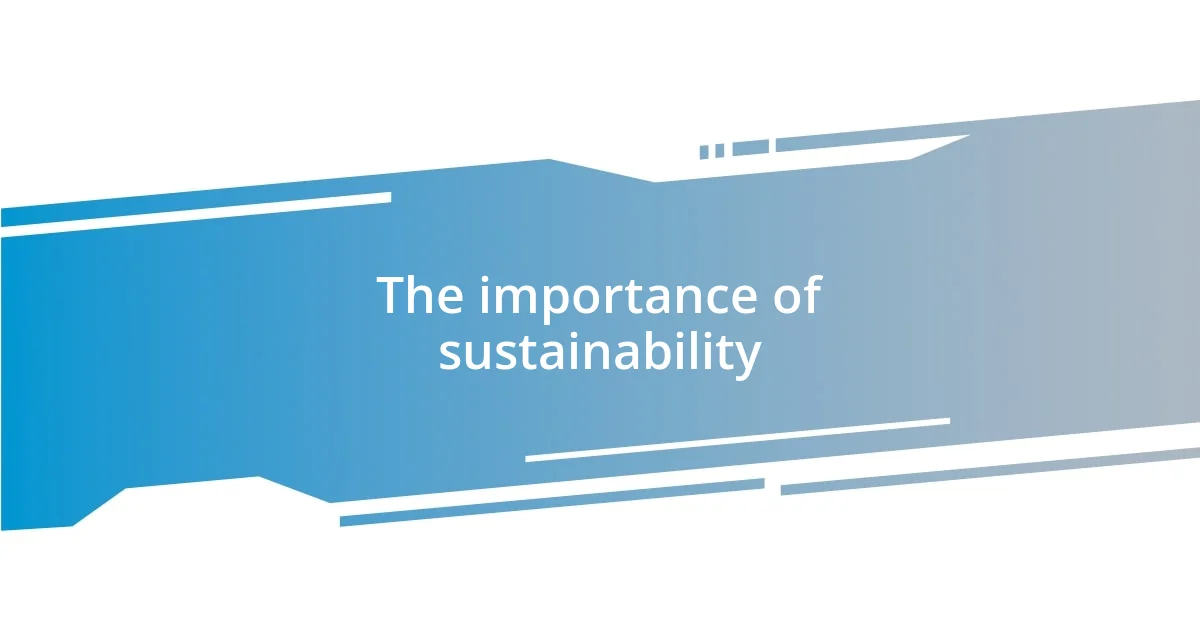
The importance of sustainability
The importance of sustainability cannot be overstated, particularly in manufacturing processes like thermoforming. When I first started learning about materials and their environmental impacts, it struck me how much waste is often generated. This realization sparked my passion for exploring ways to minimize waste, and I’ve seen firsthand how even small changes can lead to significant benefits. By prioritizing sustainable practices, we not only protect our planet but also enhance the long-term viability of our businesses.
Sustainability in thermoforming encourages innovation and efficiencies that can lead to cost savings. I once worked with a team that re-evaluated our supply chain and discovered that sourcing recycled materials was not just eco-friendly but also more economical. It was a win-win situation; we reduced our carbon footprint and our costs. How can you argue against that? Embracing sustainability isn’t just about being responsible—it’s also about being smart in business.
Moreover, consumers today are increasingly aware of the environmental impact of their purchases. I remember when a friend chose a product specifically because it was made sustainably—it opened my eyes to how sustainability can positively influence market trends. This shift towards eco-consciousness is not only compelling for brands but also essential for fostering a healthier planet.
| Importance of Sustainability | Impact on Thermoforming |
|---|---|
| Minimizing Waste | Helps reduce overall production costs and environmental impact. |
| Innovation | Encourages the exploration of new materials and processes. |
| Consumer Awareness | Influences purchasing choices in favor of sustainable options. |
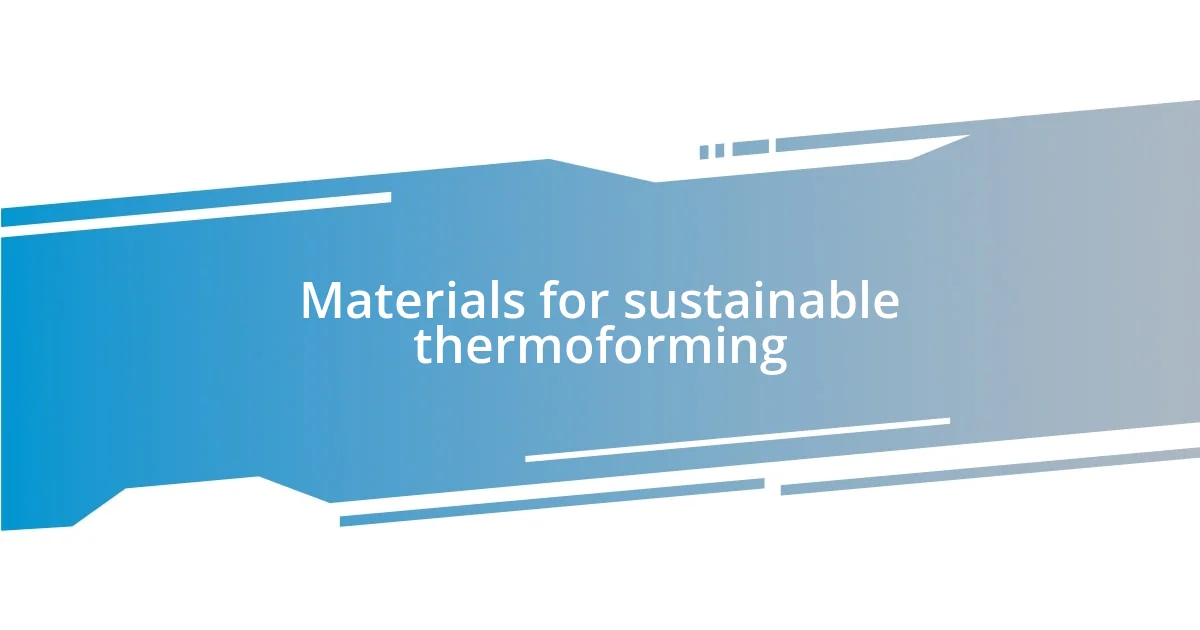
Materials for sustainable thermoforming
When it comes to sustainable materials for thermoforming, I’ve discovered that the choices we make truly matter. Exploring biodegradable plastics has been an eye-opening experience for me. These materials, derived from renewable resources, not only reduce our reliance on fossil fuels but also decompose more safely in the environment. There’s something profoundly satisfying about knowing that the products we create can leave a lighter footprint.
Some noteworthy sustainable material options include:
– PLA (Polylactic Acid): Sourced from corn starch or sugarcane, this is a popular biodegradable alternative.
– RPET (Recycled Polyethylene Terephthalate): Made from post-consumer plastic, it helps reduce waste and energy consumption.
– TPU (Thermoplastic Polyurethane): This material is highly versatile and can be reinforced for added durability, often made from bio-based resources.
– Bio-based foam materials: These innovative materials can offer cushioning properties while being environmentally friendly.
Furthermore, I have found that sourcing recycled materials can create a powerful ripple effect throughout the entire manufacturing process. For instance, when one of my previous projects incorporated RPET, I was astonished to see how it elevated the entire production chain. Not only did we reduce the demand for virgin plastics, but we also created a product that resonated with eco-conscious consumers. It reminded me that every material choice is an opportunity to showcase our commitment to sustainability.
The benefits of these sustainable materials go beyond environmental impact; they also communicate a brand’s values. I often reflect on how customers appreciate transparency in sourcing. That sense of integrity can foster deeper connections with the audience, turning them into advocates for your brand—something I’ve seen happen firsthand. It’s fascinating how making a single material choice can set off a series of positive outcomes, isn’t it?
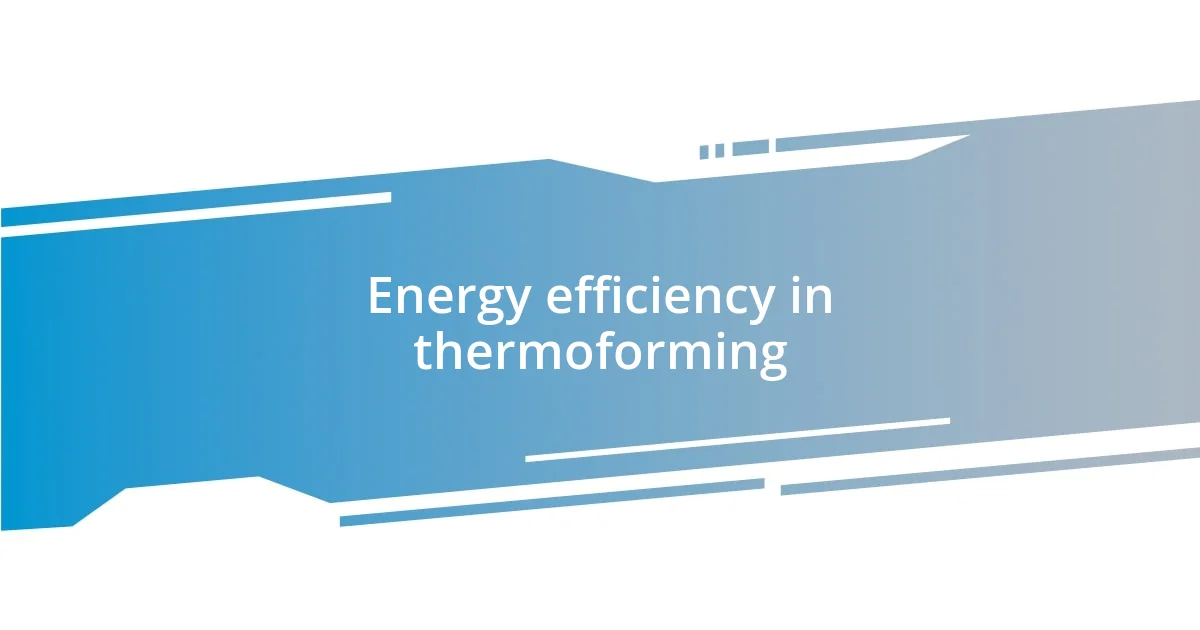
Energy efficiency in thermoforming
Energy efficiency is a pivotal aspect of thermoforming that deserves our attention. I recall a time when we revamped our heating methods. By switching to infrared heating, we significantly reduced energy consumption during the process. It was incredible to see how that single change not only cut costs but also improved our production speed. Have you ever considered how energy efficiency could reshape your approach to manufacturing?
In my experience, optimizing energy use in thermoforming often leads to better quality products. When everyone in the team is on the same page about energy-efficient practices, the end results are not just financially favorable, but also enhance product integrity. For example, I once noticed that utilizing a continuous heating method allowed for a more uniform material heating, resulting in less waste and defects. Isn’t it amazing how efficiency can drive excellence?
Moreover, investing in energy-efficient machinery has long-term benefits that truly resonate with sustainable practices. I distinctly remember presenting a case for upgrading our thermoforming machines. The initial investment felt daunting, but when we analyzed the return on investment over time, the energy savings and reduced operational costs convinced even the skeptics on the team. It became clear that prioritizing energy efficiency isn’t just a trend—it’s an essential strategy for future-proofing our operation. How could you integrate energy efficiency into your own processes?
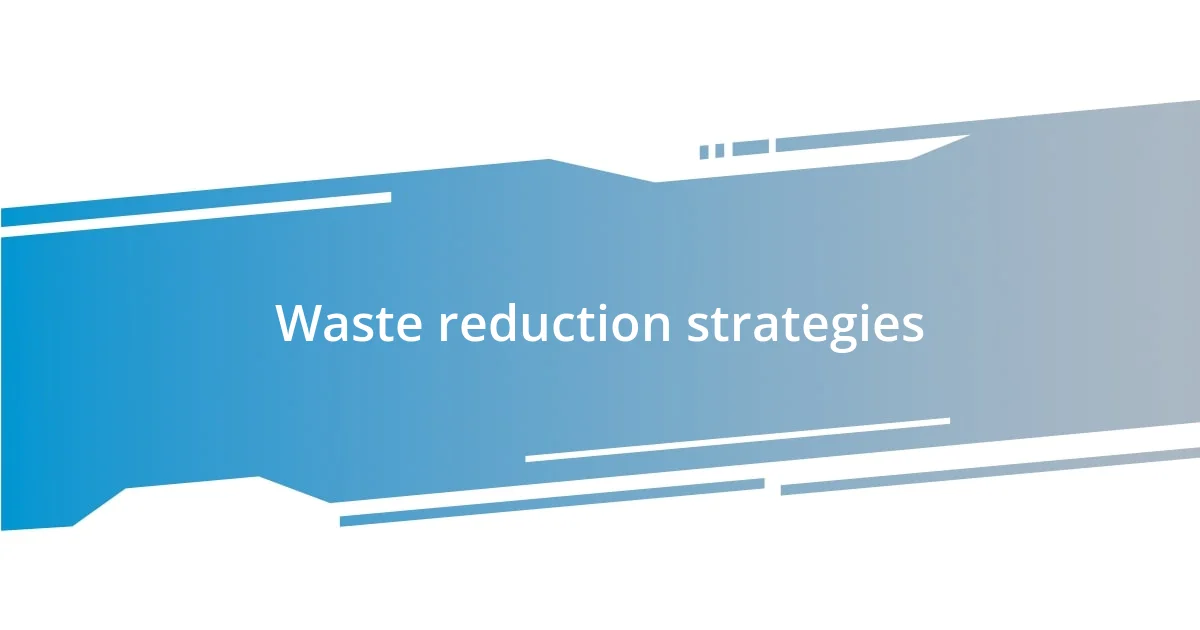
Waste reduction strategies
Implementing waste reduction strategies in thermoforming is a journey I’ve found quite rewarding. One approach I’ve experimented with is integrating cutting-edge software to optimize the cutting patterns of materials. By carefully planning layouts, we minimized offcuts significantly. It’s surprising how much material can be saved with just a little foresight, and I often think about how this practice can inspire a shift in mindset toward resourcefulness.
Another effective tactic involves re-evaluating the packaging processes of our products. In one project, we switched to nested packaging, allowing us to pack more items together while using less material. It not only reduced waste but also lowered shipping costs, which brought a smile to everyone involved. Have you ever considered how small changes in packaging can lead to big impacts?
Lastly, I’ve embraced the concept of upcycling leftover materials whenever possible. For instance, using trimmed edges from our standard products to create new items has fostered a creative environment within the team. It’s fulfilling to transform waste into something useful, almost like giving those materials a second chance at life. This not only showcases our commitment to sustainability but also fosters a culture of innovation and collaboration. How could your team benefit from viewing waste as a resource?
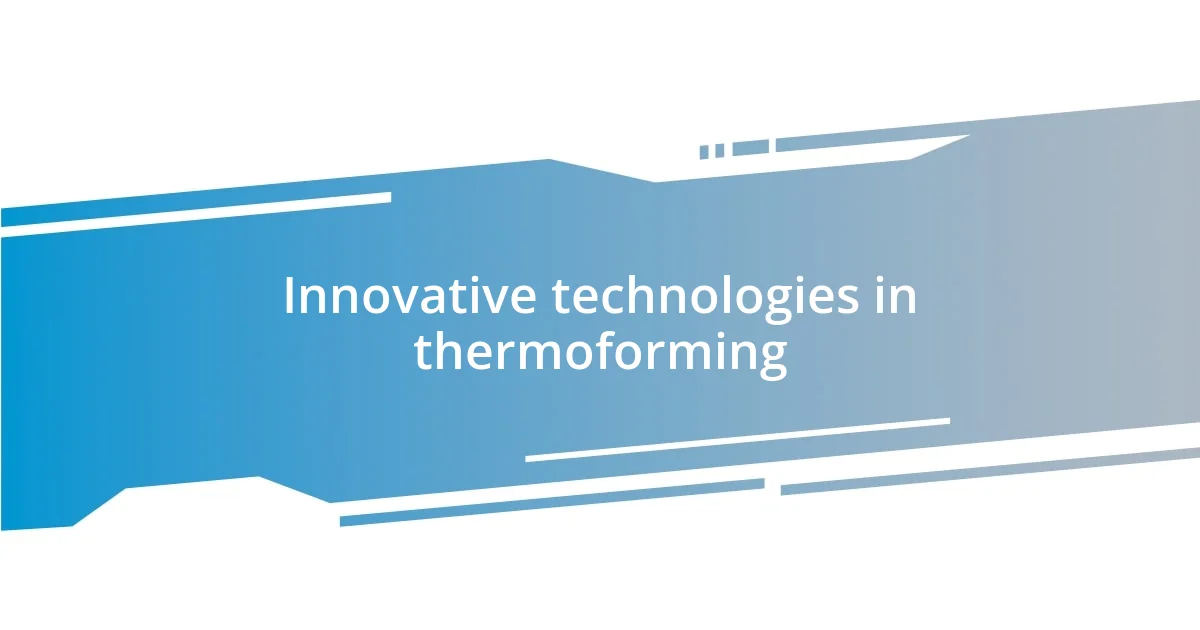
Innovative technologies in thermoforming
Innovative technologies in thermoforming are constantly evolving, and I’ve witnessed firsthand how advancements in automation have transformed the landscape. For example, I recall when we integrated robotic arms in our production line. The increase in precision not only boosted our efficiency but also reduced human error, which was a game changer for product quality. Have you experienced the impact of automation in your own operations?
Another remarkable innovation is the use of advanced materials that enhance the thermoforming process. I remember experimenting with bio-based polymers that provided robust performance while minimizing environmental impact. It was eye-opening to see how these materials not only met our functional requirements but also aligned with our sustainability goals. Have you considered the potential of alternative materials in your production practices?
Moreover, we’ve also leveraged digital twins—virtual replicas of our thermoforming machines. This technology has been invaluable for troubleshooting and predictive maintenance. I can’t help but feel excited about the potential of using data analytics to foresee issues before they arise. It’s like getting a sneak peek into the future of our operations! Have you thought about how digital technologies could revolutionize your manufacturing practices?
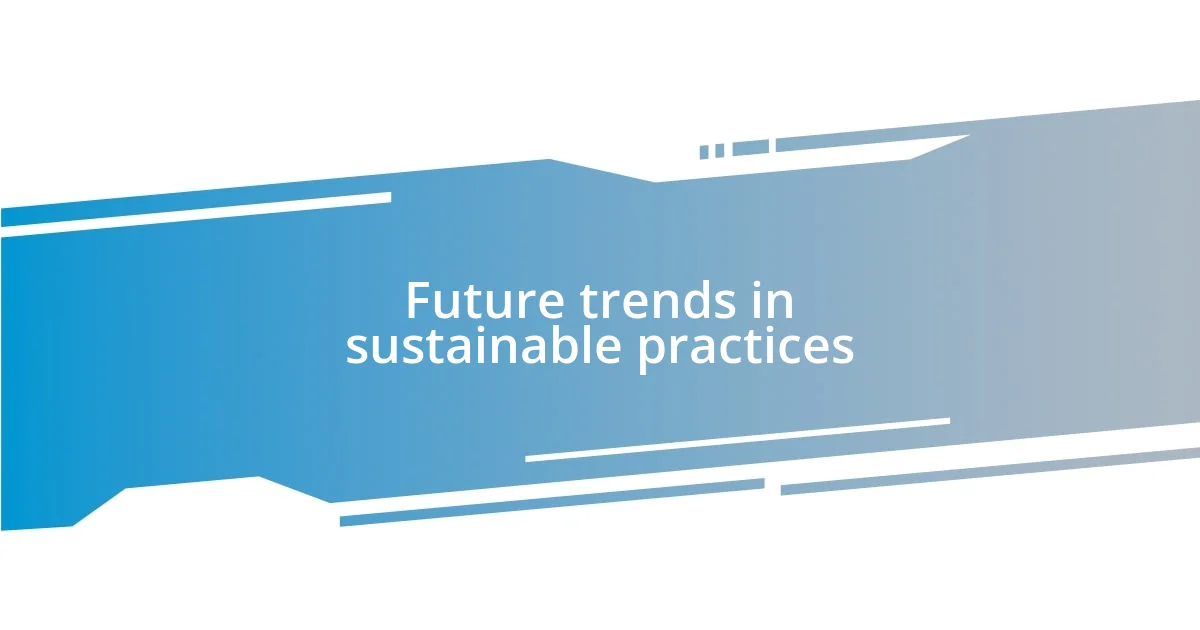
Future trends in sustainable practices
I’m excited about the future of sustainable practices in thermoforming, especially as I see a growing trend toward the use of renewable energy sources in manufacturing. Recently, we made the switch to solar power in our operations, and I have to say, the feeling of generating our own energy was incredibly uplifting. Have you considered how harnessing renewable energies could cut costs and create a positive environmental impact in your business?
There’s also a fascinating shift towards circular economy principles that really resonates with me. For instance, I participated in a project that focused on creating closed-loop systems. We sourced recycled thermoformed materials to create new products. Witnessing the entire process come full circle not only gave me a sense of fulfillment but also reinforced my belief in the power of collaboration. Isn’t it remarkable how viewing resources as interconnected can lead to more efficient production methods?
Lastly, I believe that transparency will play a crucial role in shaping the future of our industry. Sharing sustainability metrics with stakeholders and consumers builds trust and encourages responsible practices. I recall when our team first published our sustainability report; the positive feedback from our clients was overwhelming. It was a reminder that being open about our efforts resonates deeply with others. How might your transparency efforts strengthen your relationships with customers?











